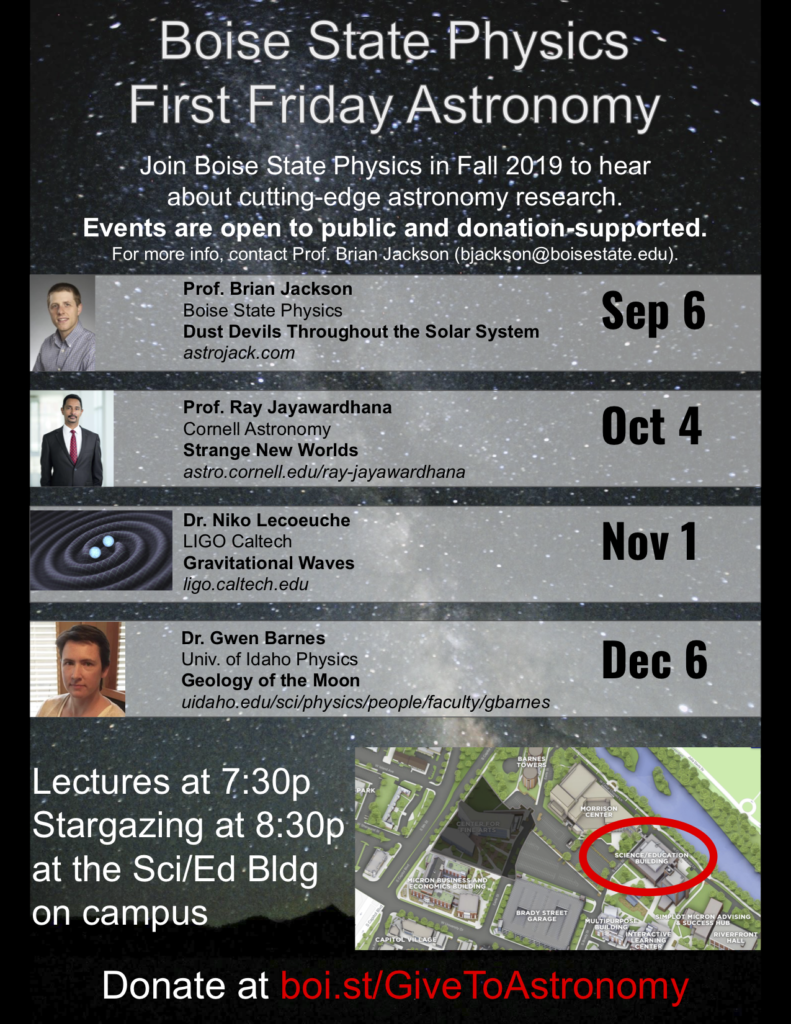


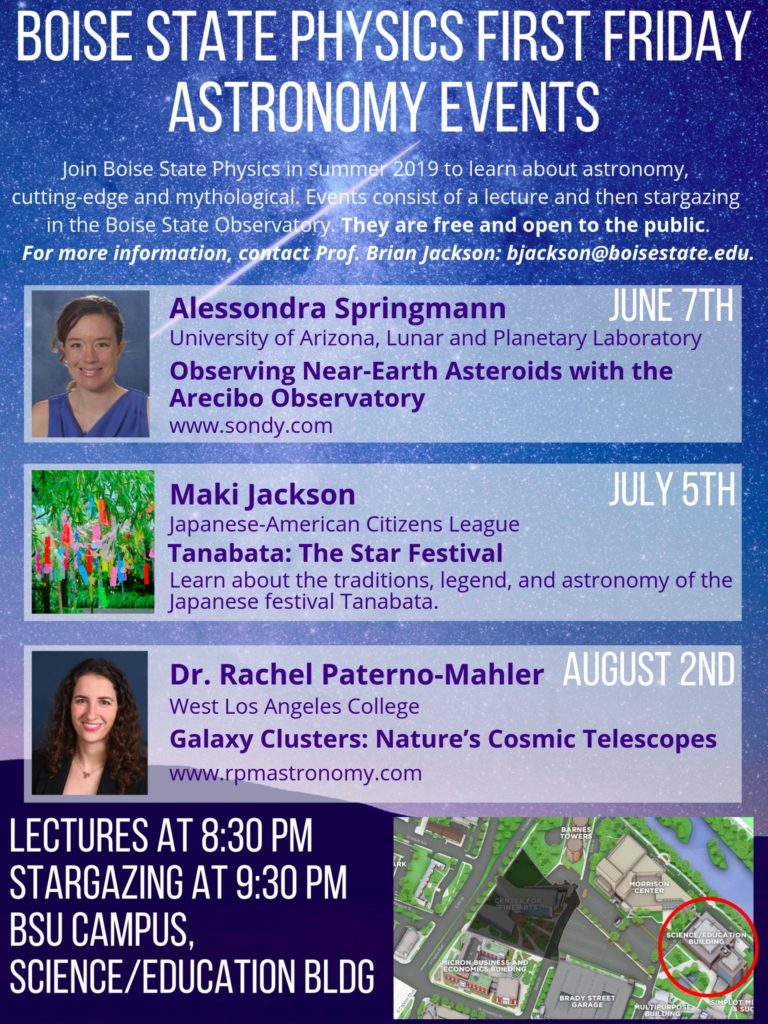
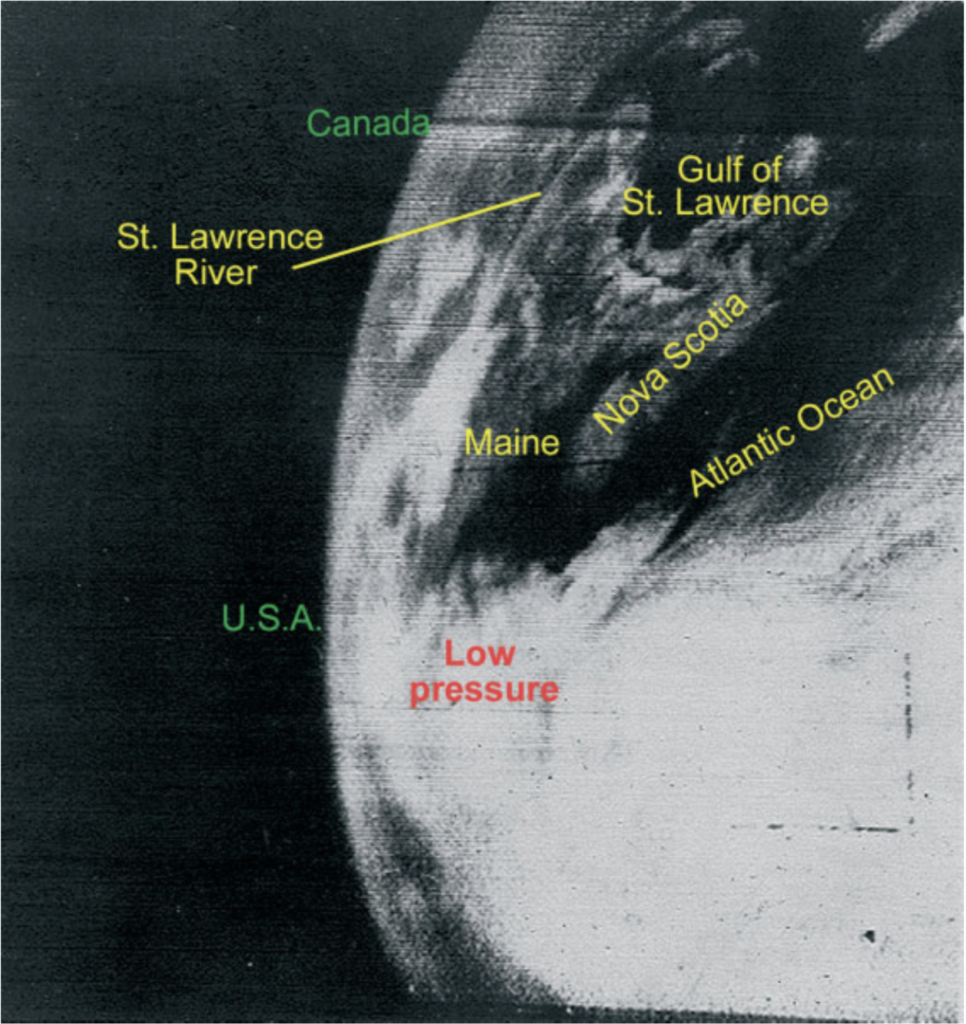
On April 1, 1960, NASA took the first weather satellite picture onboard TIROS-1, the Television and Infra-Red Observation Satellite.
In spite of its name, TIROS-1 could only collect images in visible wavelengths, but over its nearly two-month mission, it collected more than 20,000 images of weather systems from an altitude of 700 km, launching the ancient science of meteorology into the space age.
Since those early successes, scientists have found a bewildering variety of weather patterns across the solar system.
For instance, on Venus, a stratospheric jet stream jet stream on steroids herds clouds around the planet every four days, even though it takes almost a year (243 days) for the solid body of Venus to rotate once on its axis (the Earth only takes 24 hours).
A much faster rotator, Jupiter also exhibits jet streams, and, as seems fitting for the largest planet in the solar system, the jet streams are so massive they induce a measurable gravitational signature recently detected by NASA’s Juno mission currently orbiting the king of planets.
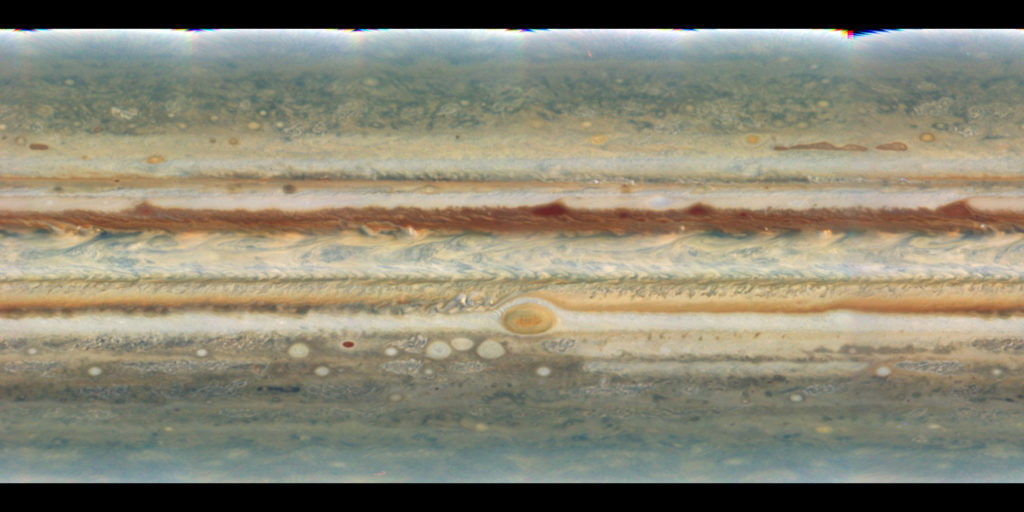
We’ve even managed to extend our meteorological studies beyond the solar system. In 2007, Heather Knutson and colleagues used soon-to-be-decommissioned Spitzer Space Telescope to create a low-res map of the atmosphere of the hot gas giant HD189733b in infrared wavelengths.
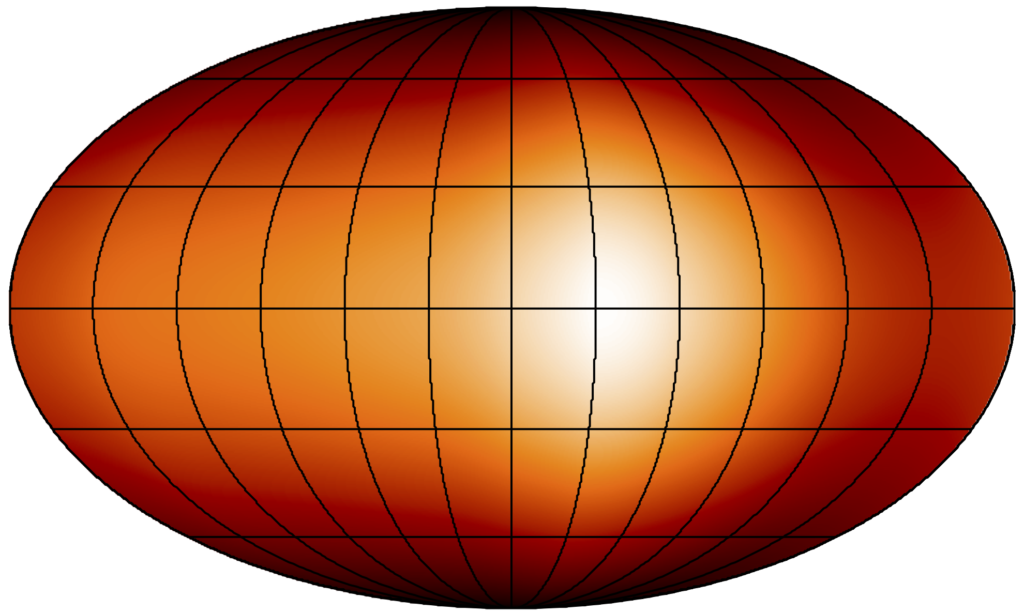
Unlike planets in our own solar system, we can’t directly image HD189733b — it’s too far away. So Knutson and colleagues used a trick to map HD189733b. Since the planet orbits very close to its host star (it circles the star once every 2 days), tidal interaction with the star has probably locked the planet’s dayside to always face the star and the nightside to always face away (reminiscent of the Moon’s rotation).
Knutson and colleagues created their map by simply watching HD189 circle its host star, and as the bright dayside rotated in and out of view, they watched as the amount of light from the planet went up and down. This up and down, called a planetary phase curve, allowed them to decipher which regions on the planet were brighter than others.
And what they found was a little surprising. Even though the planet’s dayside always points toward the star, the hottest place in the planet’s atmosphere wasn’t the place that receives the most sunlight (the “sub-stellar point“) — it was about 3,500 km to the east. Why?
Since HD189 is tidally locked, the dayside is MUCH hotter than the nightside, and this very large temperature contrast drives a super-rotating jet. This jet carries gas through the sub-stellar point at thousands of miles per hour, and by the time the gas has a chance to heat up, it’s already thousands of miles downwind.

But even though jet streams like this can be permanent features in a planet’s atmosphere, they are highly dynamic. For instance, the periodic appearance over the midwestern US of polar vortices result from meanders in the Earth’s jet stream. Since jet streams on hot Jupiters are driven by thousand-mile-an-hour winds, we might expect even more dramatic variability.
Cued by these expectations of jumpy jet streams, our research group studied the planet Kepler-76b, a Jupiter-sized planet zipping around its host star every 1.5 days. The planet is so close to its star that it’s as hot (2200 K or 3500 degrees F) as some low-mass stars.
We analyzed phase curve observations of Kepler-76b collected several years ago by the Kepler Mission, which stared at the planetary system for more than 3 years, which gave us a lot of data to work with.
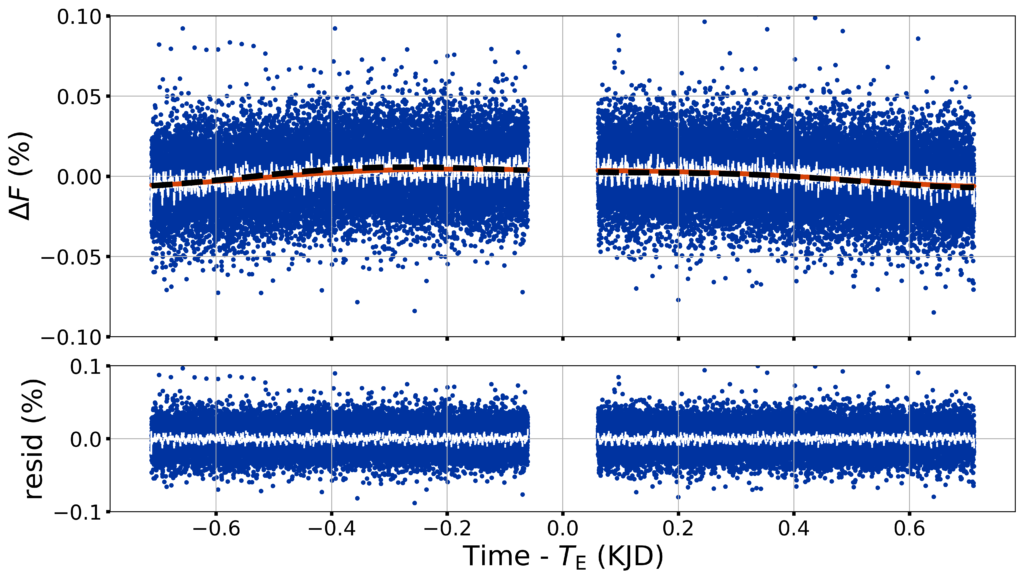
The blue dots in the figure above shows the subtle up-and-down phase curve for Kepler-76b. In our analysis, we found that up-and-down went up a lot during some orbits and much less on others. All told, these variations amounted to changes in the planet’s dayside temperature of hundreds of degrees.
What’s causing this variability? The short answer is we don’t know. But we have some guesses. Previous work has shown that, although Kepler-76b’s dayside is much too hot for clouds (they quickly vaporize), the super-rotation can transport clouds from the nightside.

We expect that when Kepler-76b’s dayside gets a little cloudy, it will get a little brighter, meaning the phase curve will have more up and down. But since the dayside clouds would now be reflecting more sunlight, that means the dayside will get a little cooler (like on a cloudy day on Earth).
Since the windspeed of the jet stream depends on the temperature contrast between the day and nightsides, a cooler dayside presumably means a weaker jet. The clouds transported to the dayside then evaporate, and the weaker jet cannot bring clouds from the nightside quickly enough to resupply them. Thus, the clouds clear out, the dayside loses its cooling shroud and heats up, which strengthens the jet and starts the cycle all over again.
As in all things science, more studies are needed to decide whether this scenario actually plays out in the atmosphere of Kepler-76b and other hot Jupiter. But for now, studies like ours show that the same kinds of meteorological processes seen on the Earth from space 60 years ago can also be seen on worlds beyond our solar system.
Hot Jupiters are gas giant planets like Jupiter but orbiting so close to their host stars that they can be as hot as small stars. In fact, some suffer such strong irradiation that their atmospheres are being blasted off into space. These objects were among the first exoplanets detected, and their origins and fates remain unclear.
Being so hot, their atmospheres are also unlike any planet’s in our solar system, but we can be certain that, with temperatures hot enough to vaporize rock, the weather on these planets is highly dynamic. The video below shows what happens to one such planet as it gets blast-roasted by its host star – a giant thermal wave screams around the planet.
Weather forecasts on hot Jupiters would to have keep track of super-sonic winds, ruby rain, and warm fronts heated by magnetic fields. And a recent study using observations from the Hubble Space Telescope shows that these dynamic atmospheres remain mysterious.
Led by Jacob Arcangeli of the University of Amsterdam, the study used the Wide-Field Camera onboard Hubble to watch WASP-18 as the hot Jupiter circled its star.
As the planet swings revolves around its star, we see first the cool nightside of the planet and then the blistering dayside. By measuring the diurnal cycle of infrared light emitted from the two sides of the planet, called the phase curve, Arcangeli and colleagues were able to measure their respective temperatures and learn something about the planet’s weather.
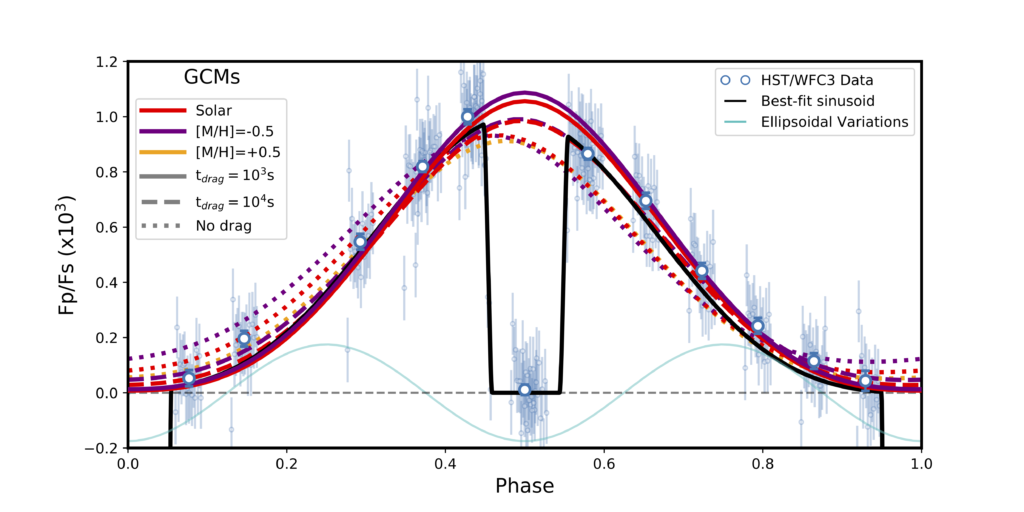
The figure above shows WASP-18b’s phase curve as blue points and a model fit to the data as a black line. By applying computer simulations for the planet’s weather, Arcangeli and colleagues estimated what they expected the phase curve to look like various assumptions about the planet’s composition and atmospheric dynamics.
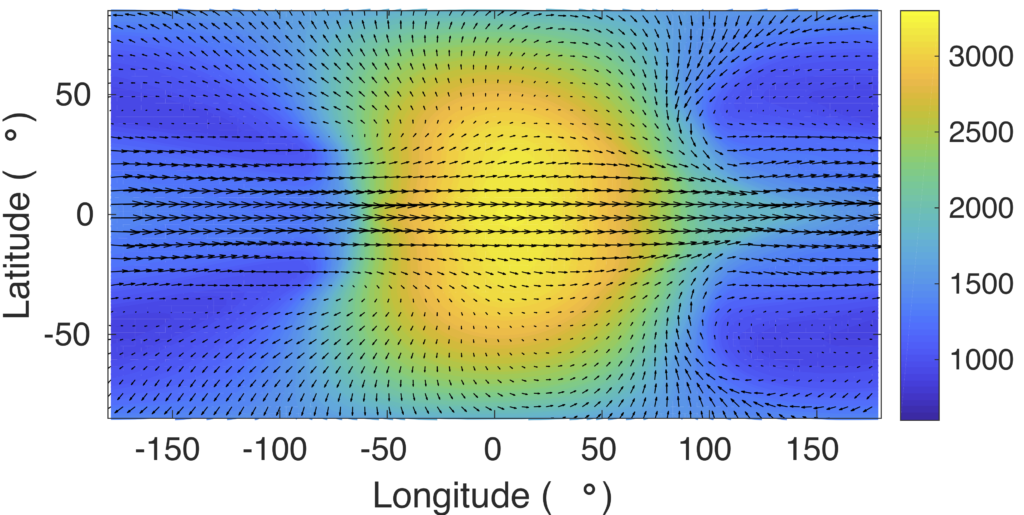
Using their models, they were able to draw a rough map of temperatures in WASP-18b’s atmosphere (shown above), like a weather map for the Earth. Like most hot Jupiters observed show far, the hottest place in WASP-18b’s atmosphere lies a little east of the point that receives the most sunlight, the substellar point. That’s because high windspeeds blow the strongly heated gas away toward the east, a little like the jet stream on Earth.
However, the winds inferred from the Hubble observations weren’t as strong as expected from the model, suggesting there is some form of drag or friction in WASP-18b’s atmosphere.
The likely culprit: the planet’s very own magnetic field. Gas in WASP-18b’s atmosphere is actually so hot, it can become somewhat plasma-fied, and plasma, consisting of hot charged particles, can interact with the hot Jupiter’s magnetic field.
This is totally unlike planets in our own solar system, where the atmospheres are comparatively cool and none of the gas has turned into plasma.
The upshot of this result is that we may be able to use observations of the meteorology on distant worlds to learn something about the planets’ magnetic fields, which originate deep inside the planet. So their weather may allow us to plumb the depths of these distant worlds.
NASA’s TESS Mission launched last March and began returning data in the fall. As the worthy successor to the wildly successful Kepler Mission, TESS promises great things.
And already some of that promise is being fulfilled. Astronomers have used TESS data to find exocomets, probe the atmospheres of planets we already knew about, and most recently to find possible evidence for imminent planetary destruction.
The possibly doomed planet is WASP-4b, a gas giant planet that passes in front of its host star every 1.5 days. It orbits so close to its host star that tidal interactions between the star and planet can cause the shape of orbit to vary over time, giving rise to transit-timing variations, illustrated in the video below.
Just this week, Luke Bouma, a graduate student in Princeton astronomy, and colleagues analyzed recent TESS observations of WASP-4b to see if the data show any signs of orbital variations. Not only did they find signs of orbital variation, they found that the orbital period seems to be getting shorter, at a rate of about 12 milliseconds per year, or about one jiffy every year. This about 1000 times faster than slowing of the Earth’s day due to tidal interactions with the Moon.
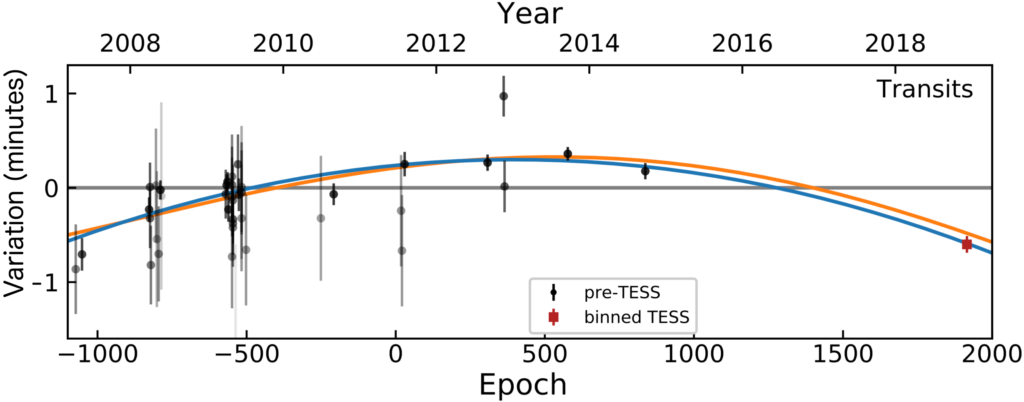
It’s not clear exactly what is causing WASP-4b’s orbit to change, and Bouma explores a couple of options. One idea is that WASP-4b’s orbit is very slightly eccentric and that tidal interactions between the planet and star may be causing apsidal precession, similar to effects experienced by the Moon that complicate the timing of eclipses.
Another, and to my mind more exciting, possibility is that tidal interactions with the host star are drawing the planet inexorably inward. In that case, WASP-4b may eventually be torn apart by its host star’s gravity, a fate that may have befallen many a hot Jupiter.
The great thing about both hypotheses is that they can be tested by additional observations. In fact, amateur astronomers may be able to contribute. Indeed, there is a cottage industry of amateur astronomers observing exoplanet transits, and the hardware, software, and expertise required are pretty minimal for serious amateurs.
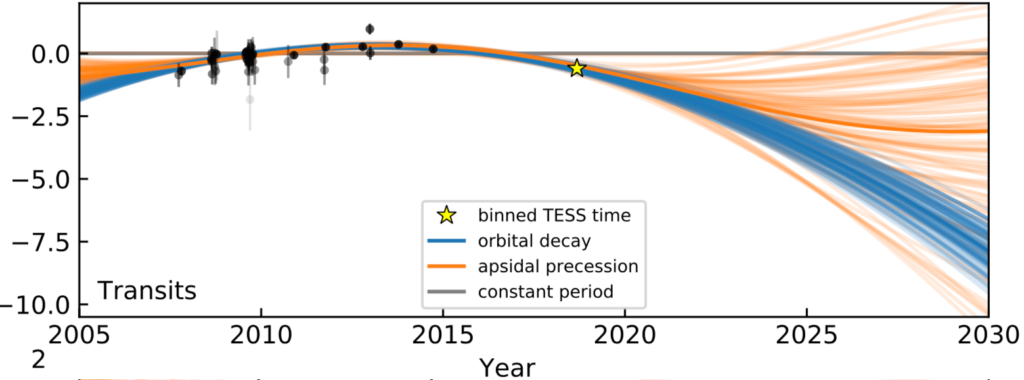
Bouma predicts that, over the next several years, WASP-4b’s orbital period might change by several minutes. If the period drops and then increases again (orange curves above), then the variations are likely due to precession, and the planet is probably safe against tidal decay.
However, if the period continues to drop (blue curves above), then the planet is likely doomed to tidal disruption in the next nine million years, short on cosmic timescales.